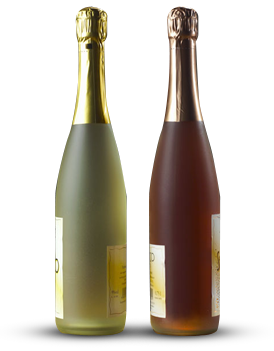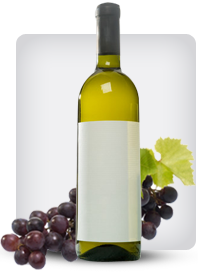

Tag: Wine
Temecula Wine Tours in the Sky
Posted onLike many people, I am fascinated by flying. I love to get on an aircraft not only because it take me to faraway land, but also because it gives me a feeling of being lifted up in the sky. To me, it’s a great way to start the day with peace, tranquility and stunning views.
A few years ago my husband and I and some friends took a helicopter tour over volcanoes national Park on the big Island in Hawaii. Now that was a great time! The flight itself lasted approximately 45 minutes, which does not really seem like a long time. But we got to see a lot in those 45 minutes.
It seems like whenever I want to try a new adventure, I head for smaller and smaller aircraft, as is evidenced by this flight in a hot air balloon over the Temecula wine country. For my next adventure I’m really kicking around the idea of doing some hang gliding on the Oregon coast.
I loved the peace and tranquility of being up in the air with the birds, without the noise of a propelled craft. Although the sound of pumping hot air into the balloon to keep us aloft was quite noisy. Other than that, the absolute solitude was astounding. The views of the vineyards in the Temecula Valley was awe inspiring. I cannot imagine a better way to start the day!
We took the morning flight, which had us up in the air in the while it was still fresh. They served Champagne before the flight, and we departed from one of the Temecua Valley wineries. After the flight, we had lunch on a lovely terrace overlooking the vineyards and rehashed our flight. Then we continued on to the ground portion of our wonderful Temecula wine tour with an open air jeep tour. In addition to the wineries we visited, there was even some off roading to a spot with a great view of the valley from a cliff side vantage point, that was off the beaten track.
It is hard to describe how it feels to hang in the air. It is not quite the same sensation as being in an airplane, because an airplane is rapidly moving through the sky. A hot air balloon, while not motionless, is moving so slowly that it feels as if you are motionless. But, unlike the hang gliding I will try next, with a hot air balloon ride you have the security of a floor under your feet and walls around you.
And the views! I am a big fan of rooftop bars or tall buildings with views. As long as there is some type of railing or barrier between me and the view, my fear of heights does not kick in. My camera had a busy morning of it, capturing the oh so different angle we had of the vineyards. It was impossible to not end up with some great photos. It was also one of the most romantic mornings I have ever had in my life. Since my husband and I were the only passengers, our guide graciously left us alone unless we addressed him.
It was great to be able to see the vineyards from the air, and then to finish up my Temecula wine tours adventure in an open-air Jeep, visiting the wineries that I recently viewed from the air. It’s a good thing we did not do it the other way around. Although it would be great fun to climb into a hot air balloon after a day of wine tasting, since I swallow instead of spit when I am wine tasting, I cannot see them allowing me to do that.
Wine Cabinet Furniture For Your Home
Posted onIf you prefer wine so much that you might wish to have it placed only in the finest quality cabinets on the market, then as another wine passionate, I will completely agree on that one. Using this method, you will certainly treat your favorite drink with the admiration that it has earned through its taste and magnificent color. Also, wine cabinet furniture will significantly enhance the characteristics of your living room and it is likely to make the atmosphere more inviting. Using only the best wine cabinet furniture, you will conserve the flavor and quality of all of your beverages.
The first thing that you ought to do just before acquiring wine cabinet furniture, is get on line and visit the internet community sites that focus in such things. You will there find out about the most important things you will need to think about before buying one such cabinet and the greatest places you can have them acquired from. Make sure to read every post so that you won’t miss out on vital info.
Before buying the wine cabinet furniture, make sure that you will measure the space where you will want to have it. This is because, if you are not custom making it or ordering it, you will have to be sure that it will fit. If you want to custom order it, measure up the space and send the necessary details to the manufacturer and you will have your cabinet in no time, perfectly matching the space it has been designated to fill.
It is said that beauty lies in the eyes of the beholder, and that is true. If you want to impress your friends, then you should definitely buy a cabinet that has stunning looks. You will see that they will start complimenting all of your drinks, for, as you know, something pretty much tastes better when it comes from a beautiful place.
Make Your Unique Wine At Home
Posted onPrice of wine and spirits is increasing day by day. It is not legal to your own spirits and it is not so easy, needing some form of distillery equipment. But wine is different and of course easier to make.
My father always made his own wine, and whilst it was cheaper to make than to buy, there was a waiting time between brewing and drinking! Once made, however, you have 6 bottles of wine and as long as you begin a new brew about once every two weeks, you will never run out! The one thing you will find with making your own wine is that it does not taste the same as wine purchased at the store. Their wines are refined with this and that to give them a specific flavour, smell and overtone. Your wine will taste raw, and decidedly fruity.
So how easy and cheap is it to make your own wine? Well relatively cheap, and easy – although decidedly messy! You will need 4 or 5 gallon demi-johns (a large glass jar required for fermenting the wine), 6 bottles, corks, a corking machine, labels, tablets for clearing and yeast. These are basic equipment requirements and can be purchased for around £20 – that is 4 bottles of good wine. With this equipment you will make batch upon batch of delicious home made wine. All you pay for from now on is your ingredients!! You make back your £20 from the cash you will save from not buying wine from the store, and therefore with your first 6 bottle batch of wine you already begin to save money, afterwards you are saving £30 with each batch!
What ingredients do you need? Sugar is a must, as is yeast – these cost a few pounds. After that, your costs are whatever you want them to be! I have made wine from pineapples, grapefruit, raspberries, home grown strawberries, and best of all black currant cordial!!!!! This was my dad’s recipe, and I am now going to share it with you (luckily he doesn’t read my articles – I hope!):
1 large bottle of supermarket brand cordial (1 litre)
3 lb sugar
Yeast and nutrient
(These ingredients will cost £3 and will make 6 bottles of wine – it is a rose that is quite sweet and powerful, but smooth and well balanced also)
Dissolve the sugar in warm water add cordial and boil for 20 minutes – stirring frequently. This kills preservatives. Allow to cool. Pour into your demi-john. Add yeast and nutrient. When ferment dies down, top up to shoulder and continue to finish.
Leave it to ferment for around 8 weeks, somewhere warm but not hot. When you return to it, you will find a clear pink liquid that tastes just great. Not only is this a cheap wine to make, but also clears fantastically due to the fact that there is not any fruit pressing involved in the process and therefore no “bits” in the mixture.
You can now syphon it into the bottle and enjoy!! Let me know how you get on.
Related Malbec Wine Articles
Slow Aging With Resveratrol Wine
Posted onRed wine has been proven to provide many health benefits, as noted through many clinical trials. The reason for this is the anti-oxidants found in it, as well as the red wine polyphenols, anthrocyanidins and Reseveratrol. Found in red wine and grapes, as well as other red fruits. Reseveratrol wine has been named the “Fountain of Youth”. It is a fat fighter, and has also been shown to help treat diabetes, heart problems and cancer.
Reseveratrol alone has proven to be about twenty to fifty times more effective an anti-oxidant when compared to Vitamin C. It acts as an anti-clotting agent that prevents the formation of blood clots. Blood clots are one major reason for heart attacks and strokes. It has also shown to help prevent some forms of cancer. Another benefit of Reseveratrol is that is helps increase the formation of dendrites in the brain.
One of the biggest advantages of taking Reseveratrol wine is that it is an anti-aging component, having shown to increase life span of middle-aged rice that were given low doses of the anti-oxidant. It was shown to have the same effects on their life span that a reduced calorie diet – with 20%-30% fewer calories – would have.
While Reseveratrol wine has many health benefits, red wine also contains alcohol, which is not recommended in large doses. Therefore, scientists have discovered a way of delivering the benefits of Reseveratrol wine through means other than red wine. You can now buy capsules that contain red wine polyphenols, grape seed extract and Reseveratrol and take these without worrying about the damage the alcohol in red wine would cause to your health.
One of the products available on the market that provides Reseveratrol wine to you in a capsule form is Pure ResV. This capsule is a great way to get all the benefits of Reseveratrol wine without having to drink massive amounts of red wine.
One of the advantages of Pure ResV is that it is very useful in losing weight. When you purchase a trial bottle you also receive a subscription to two weight loss information services, namely Insider Secrets and Comprehensive Weight Loss. By using Pure ResV and the information in conjunction, you can lose weight fast and keep it off. The subscriptions will also provide tips and tricks for making tasty meals and getting the most out of your workout.
Another advantage of Pure ResV is that along with weight loss, it will help you get healthy in a variety of ways. Your cardiac health will improve, and people will diabetes will be able to control their blood sugar levels easily. An additional advantage is that Pure ResV will help decrease the chances of you getting cancer.
Now you can get all the health benefits of Reseveratrol wine without any of the harmful effects of wine by using Pure Resv.
More Syrah Wine Articles
Homes With Wine Cellars
Posted onIf you’re going to talk about luxury homes in the Los Angeles area, one thing you have to consider is that many homes of the rich and famous will probably have a wine cellar of some sort. For many, it’s nothing more than a status symbol. For others, it’s a necessity if they’re either going to be doing a lot of entertaining, or just love wines of all styles and vintages.
Many people don’t understand what the purpose of a wine cellar is, or why it’s such a big deal. People who are connoisseurs of wine have an understanding of what keeps a wine good over the course of time. For instance, these items seem to be important for keeping a wine at peak condition over time:
Keeping wine in the dark most of the time
Keeping a consistent temperature, especially in the Los Angeles area where the weather is a bit warmer than normal; wines like to be kept cooler, around 70 degrees Fahrenheit
Little movement, as wines don’t like being jostled too often
Good humidity to keep the corks from drying out so they don’t shrink, as their purpose is to allow wines to breathe some, but not get contaminated by outside air
Keeping the air still, as this also can dry corks
If you’re going to collect a lot of wines, having them all in one place for convenience and safety
Of course, after those factors, all bets are off as to how they’re created. Some builders only use wood; others only use stone or brick. Some avant garde builders of wine cellars will use metals that actually look like coolers. In an expensive home, homes will usually be built with a wine cellar, though one can be added later; it costs more to install a wine cellar after the fact.
Los Angeles is truly a unique place when it comes to wine cellars. Even the mayor’s mansion has a wine cellar; that’s unheard of in most places around the country. In today’s world, where most celebrities will buy homes that already have this feature rather than build a home, the house of former television producer Aaron Spelling stands out not only because of its massive size, but because it also has a wine tasting room.
Another wonderful house that was formerly owned by both Kirstie Alley and Katey Segal, once again on the market for around $ 9.3 million dollars, has a large wine cellar also, with a lighted arch that can highlight the favorite wine of the owner at the time.
And the home of actors Ben Affleck and Jennifer Garner, which they paid $ 16 million for, came with a brick wine cellar, which they had to wait to use since, when they purchased it, Jennifer was pregnant.
Wine cellars in the homes of the rich and famous don’t conform to the same look or style either. Some have wines stacked on top of each other. Some have them facing each other, or side by side. Some have they spiraling either up or down, covering the equivalent of two stories. Some figure out ways to compact the space, while others want the space to be as large as their living rooms might be. And, because they have the money to pay for it, many will order customize wine cellars from Italy and France and have them installed in space set aside just for them.
No matter what, if you’re looking for a home in Los Angeles and have the money to spend, you’ll easily be able to find a home with a stylish wine cellar.
popular posts
-

How to Decant Merlot Properly: A Guide to Unlocking Its Full Potential Merlot, with its plush texture and approachable profile of plum, cherry, and chocolate notes, is one of the world’s most beloved red wines
12-22 2025While often enjoyed straight from the bottle, taking the time to decant a Merlot can dramatically elevate the experience. Decanting serves two primary purposes: Read More
-

Pinot Noir Wine Subscription Reviews: A Curated Journey for the Discerning Palate For wine enthusiasts, few grapes inspire as much devotion and discussion as Pinot Noir
12-21 2025Celebrated for its elegance, aromatic complexity, and remarkable ability to express *terroir*, Pinot Noir can be both thrilling and intimidating to explore. This is Read More

